All issues

Volume 19 (2000)
- Issue 4 Pages 163-
- Issue 3 Pages 121-
- Issue 2 Pages 48-
- Issue 1 Pages 1-
Volume 19, Issue 4
Displaying 1-4 of 4 articles from this issue
- |<
- <
- 1
- >
- >|
-
-An attempt to establish a surgically removed tonsil tissue bank at National Children's Hospital-Shin Enosawa, Seiichi Suzuki, Hiroshi Amemiya, Nobuaki Tsuchihashi, No ...2000Volume 19Issue 4 Pages 163-183
Published: 2000
Released on J-STAGE: November 13, 2012
JOURNAL FREE ACCESSWe have successfully established a collection of cryopreserved human tissues for submission to a public research resource bank when established. The first candidate tissue chosen was surgically removed tonsil tissue. To the author's knowledge, this is the first collection of human tissues to be available through a public research resource bank in Japan. The success in this study indicates that an organization consisting of a clinical hospital and a research institution of recognized quality, such as the National Children's Hospital, can be effective partners of a public research resource bank in Japan where surgically removed tissue materials are presently considered as the main source of human tissue for a broad range of research.View full abstractDownload PDF (3046K) -
Yoshio KANO, Fukumi HIRAGAMI, Kenji KAWAMURA, Shinichiro TAKAGUCHI, Sa ...2000Volume 19Issue 4 Pages 185-198
Published: 2000
Released on J-STAGE: November 13, 2012
JOURNAL FREE ACCESSOne of the xeroderma pigmentosum (XP) complementation group C strains transformed spontaneously when the cells were subcultured regularly. We observed four kinds of partially transformed phenotypes such as increased lifespan, anchorage-independent (Al) growth, morphological change and forcus formation in this XP-C cultures. On the other hand, only one or two kinds of transformed phenotypes was seen in the partially transformed normal human cells by X-irradiation. Among these four kinds of transformed phenotypes, increased lifespan is associated with the specific chromosomal rearrangements, however, Al growth phenotypes showed normal diploid Karyotype by G-banded analysis. We examined the oncogene expression in the partially transformed XP-C and normal human cell clones to study the relationship between specific cancer phenotypes and the corresponding oncogene expression. An elevated expression of the Blym gene was observed in the partially transformed XP-C cells but not in the other cells. However, we did not observe specific change of oncogene expression corresponding to specific cancer phenotype in our partially transformed cells. Oncogene may contribute in a variety of ways to conversion of a normal cell into a tumor cell.View full abstractDownload PDF (3076K) -
Miho FURUE, Makoto ASASHIMA, Ryu-Ichiro HATA2000Volume 19Issue 4 Pages 199-202
Published: 2000
Released on J-STAGE: November 13, 2012
JOURNAL FREE ACCESSWe previously established a female rat submandibular gland (SMG)-derived epithelial cell line (RSMG-1) iii serum-free defined culture to study the mechanisms of SMG morphogenesis. The SMG has sex dimorphism and associated biochemical manifestations. It is suggested that the male rat SMG-derived epithelial cells may be different in cell biological activities from RSMG-1 cells. Then, we have established an epithelial cell line derived from the male rat SMG, designated as RSMG-2 cell line, and examined the effects of EGF, FGF-1, and TGF-β on the RSMG-2 cell proliferation, compared with RSMG-1 cells.View full abstractDownload PDF (1002K) -
H. Kouchi, M. Namba2000Volume 19Issue 4 Pages 203-204
Published: December 31, 2000
Released on J-STAGE: November 13, 2012
JOURNAL FREE ACCESSDownload PDF (480K)
- |<
- <
- 1
- >
- >|